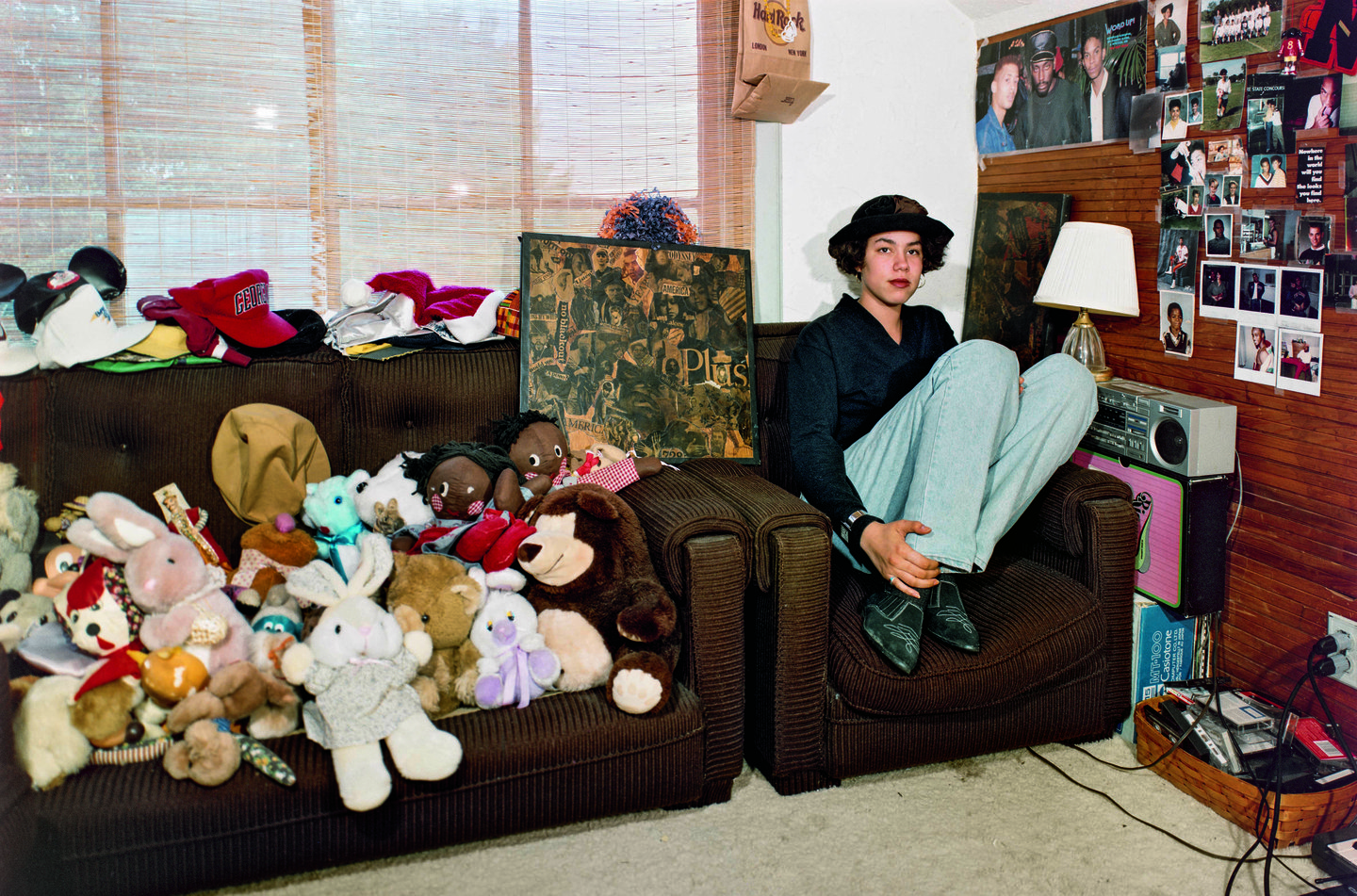INT: So, how did you shoot these photos?
AS: I used a 4×5-view camera and a wide angle 90mm lens. Brands don’t matter on view cameras. I printed all the photographs myself (at that time) 30”x40”.
I allowed myself between two and four exposures for each teenager. I did this for a couple reasons. One was because I couldn’t afford to spend a lot of money on film and processing, so I had to be economical. I knew I had to make the photograph work in those exposures since I knew I wouldn’t be able to return. If I had used a 35mm camera, I don’t think I could have had the technical control – and when babies are six months old, they already know how to pose for a 35mm camera. I didn’t want people to pose in that fake way.
The shutter speed was a quarter of a second. The result was a kind of intensity of their pose. That was on purpose – to have the subject look directly into the lens, in a direct, almost confrontational way. I wanted the teenagers to have more power over the viewer. I also used Polaroids to check my lighting and to show each person what I was trying to do, so they could be part of the process. I have a lot of respect for anyone who is willing to let me into their lives.
INT: There’s a strange tragedy to these photos because we can never truly know these people enough, we can only see them through how they choose to present themselves. There’s also beauty in that detachment. The space between us and them is only a quarter of a second.
AS: Of course. When I made the photographs, it was a time in art where representation was very important. A photograph looks like a fact, but it isn’t. Photographs take hundreds of decisions that need to be made – all the way through the process. Who I am and how I act is part of the process of making a photograph. When I’m making photographs, I’m ‘creating’ the situation in some ways. I’m choosing how it will all happen. The equipment is a choice, the film, the composition, the lighting, even how the other person feels.
It was important that none of my subjects felt exploited – when you have a camera, you have the power to tell a story. You also hold power that can be misused.
